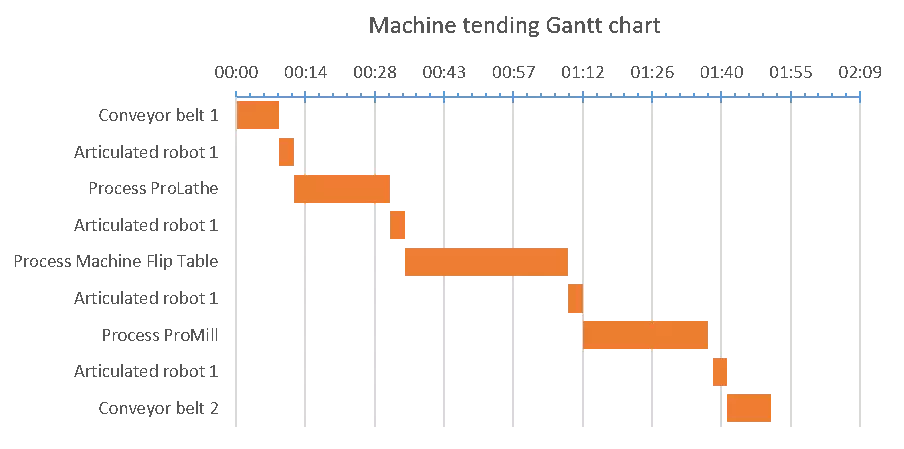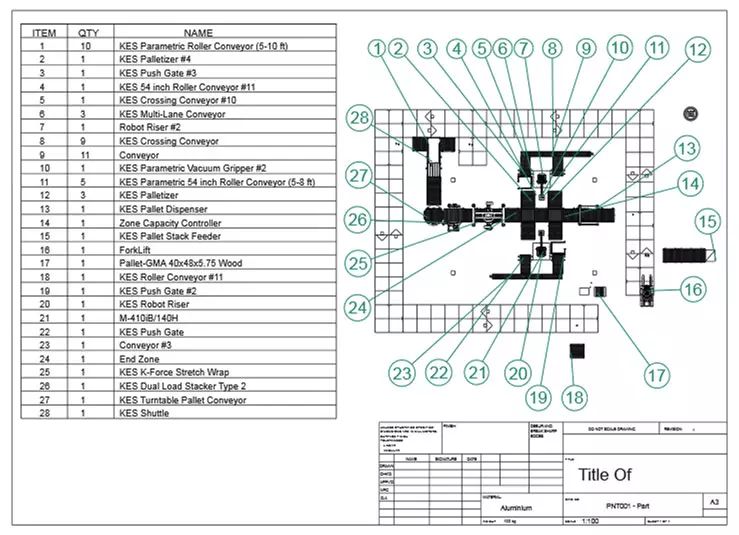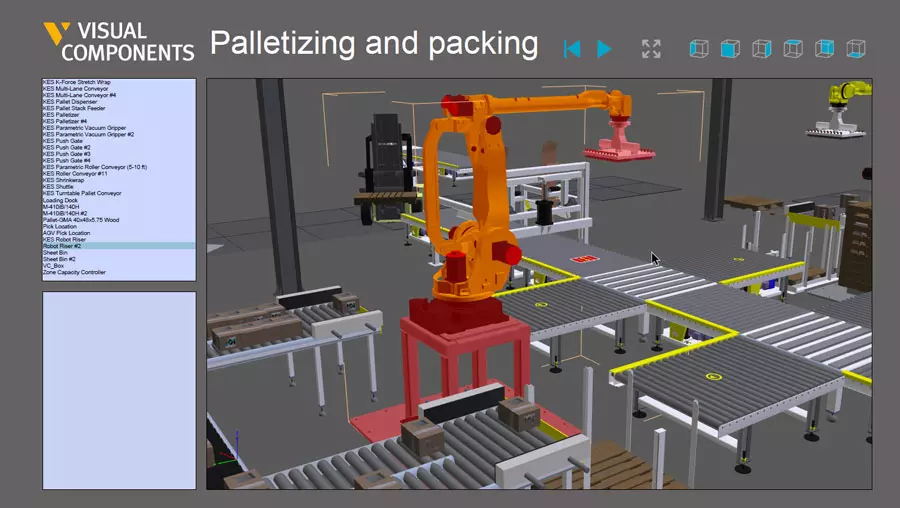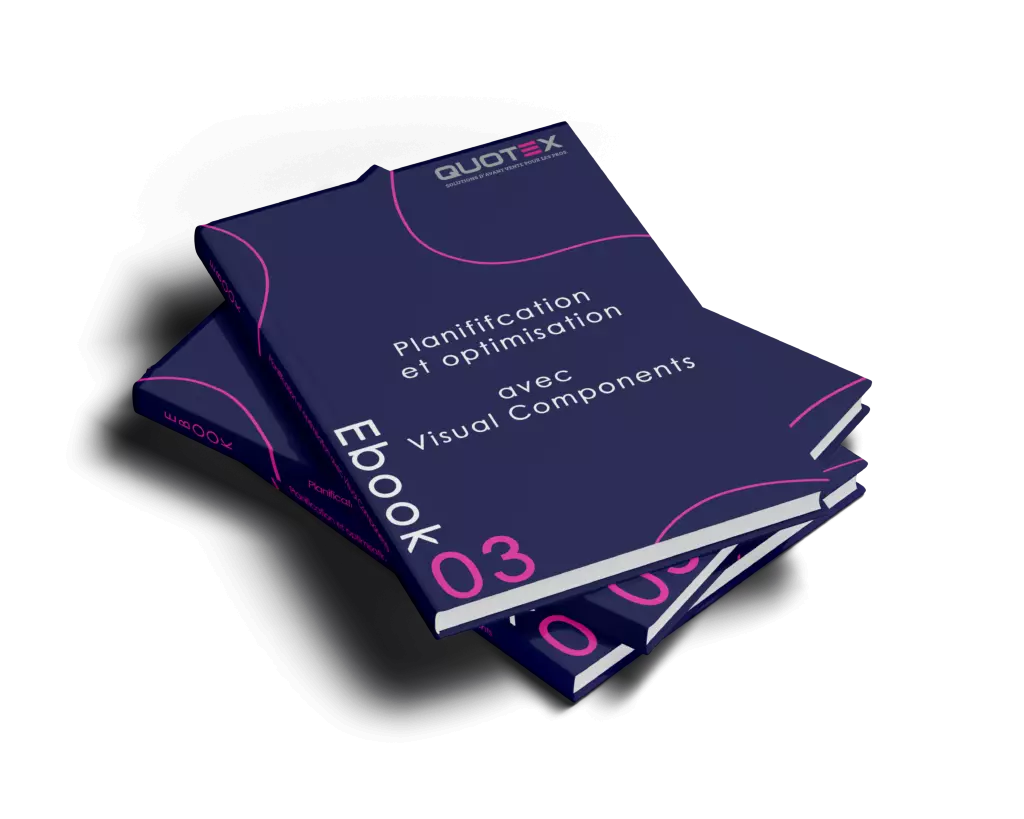How can production and logistics teams use logistics simulation software to improve their communication? Presenting data as a visualization ensures that the discussion focuses on the meaning of the data

Manufacturing and logistics processes: the difficulty of communicating ideas
Jargon, acronyms, spreadsheets and specifications; These are all useful tools when talking to your peers. But, when you have to branch out and express ideas beyond your core group, they become a liability.
Be an expert in a specific field; such as production or logistics can sometimes make it difficult to find the right words to communicate your ideas to outsiders.
Because the manufacturing or logistics process includes so many disciplines – finance, engineering, operations and others – it is important for manufacturing engineers and production planners to be able to explain their work to a diverse audience .
To do this, a shared language must be used, and for many, showing is better than telling .
The ability to collaboratively visualize and explore a manufacturing process makes it much easier to convey complex information to cross-functional teams.
It also helps you present a much more compelling case.
In this article, we'll look at how manufacturing or logistics engineers can use 3D production simulation software to improve their communication.
Data visualization: a picture is worth 1000 words
When was the last time you saw data presented in a way that made it harder to understand ? Maybe it was a spreadsheet presented in a PowerPoint presentation or a flowchart dropped into a Word document. Worse, it could have been a list of machine instructions displayed in raw code.
The problem is to focus on the effort, not the effect. Presenting data as a visualization the discussion focuses on the meaning of the data . It eliminates the need to spend time and energy explaining the data and instead focuses on what the data shows.
An example of a production process plan
Data can be presented in many ways and using a multitude of tools, but the most effective strategies include intuitive explanations and visual representations .
Images, spreadsheets, and charts are all examples of data visualizations that production engineers use to present information.
And, while they help explain some information, they often omit important details and context. Each of these visualizations is good for explaining some information in the production process, but none can synthesize and illustrate all layers of data .
3D logistics simulation software is designed to illustrate all the complex data layers of a logistics process . It can be used to create engineering-grade visualizations of production and warehousing processes in the context of the production environment.
Consider the example of a production engineer tasked with designing a new production line. The line has 8 unique steps that can be arranged in order. To explain the production process to management, the engineer creates a Gantt chart:

For the production engineer who designed the production line, and probably some of his colleagues who are familiar with the project, this illustration could explain everything.
However, when they need to communicate the process to management, they will spend valuable time explaining how to interpret the chart and the context.
- How is this process presented on a factory floor?
- Is there a conveyor belt connecting each step of the process?
- Which steps use labor?
- Are times rigid or is it the mean of a distribution?
- Does one gripper arm work in two places or are there two machines?
- How do I share/edit/update this chart and what effect does it have?
Presenting a visual simulation of this data would help stakeholders understand what is happening more quickly , so that the discussion can move to more productive areas and important issues.
Logistics simulation software: let the plan speak for itself
In any planning scenario, there will be time for presentation. As mentioned above, this need to present a new plan is hampered by the use of tools that are far from comprehensive .
By incorporating all relevant information in a single form, a visual simulation allows viewers to delve deeper into the process if necessary , or convey things at a high level depending on what is necessary.
For a system integrator responding to an RFP, the most useful information may be costs. Costs can be accumulated from a series of spreadsheets, a bill of materials, a price list and time estimates.
For a technical reviewer of the proposal, the most relevant information may be the installation and programming time required for each new machine. Getting a jump on this programming, using CNC control data exported from the simulation, allows you to directly reduce this time in addition to better estimating it.
And for the plant installation team, the proposal layout and configuration can be helpful in identifying risks before accepting the offer.
Again, having the layout files exported in a .dxf or .dwg format for use in architectural planning not only improves estimation, but also reduces the overall time required for design.
In all these cases, the information is available. Obfuscating it in the wrong format can be the difference between winning the project and losing to a competitor. It could also be the difference between completing the project on time or being delayed by redesigns that doom the product by delaying the launch.
The common ground and common file types of a visual simulation ensure that the plan can speak for itself. In doing so, it allows experts from each department to contribute their knowledge and provides the context for others to understand it.


Use logistics simulation software to better communicate your projects
When presenting a manufacturing process or a logistics implementation, it is important to take into consideration the diversity of the audience and their interests. Information should be conveyed in a way that can be quickly understood by cross-functional teams, includes all relevant information, and facilitates collaborative and productive discussion .
By visualizing the process, bias caused by misinterpretations can be reduced and the conversation can focus on the issues that matter.
You too can optimize your communication by using simulation software such as Visual Components
. Contact us to benefit from a personalized, no-obligation demonstration .




